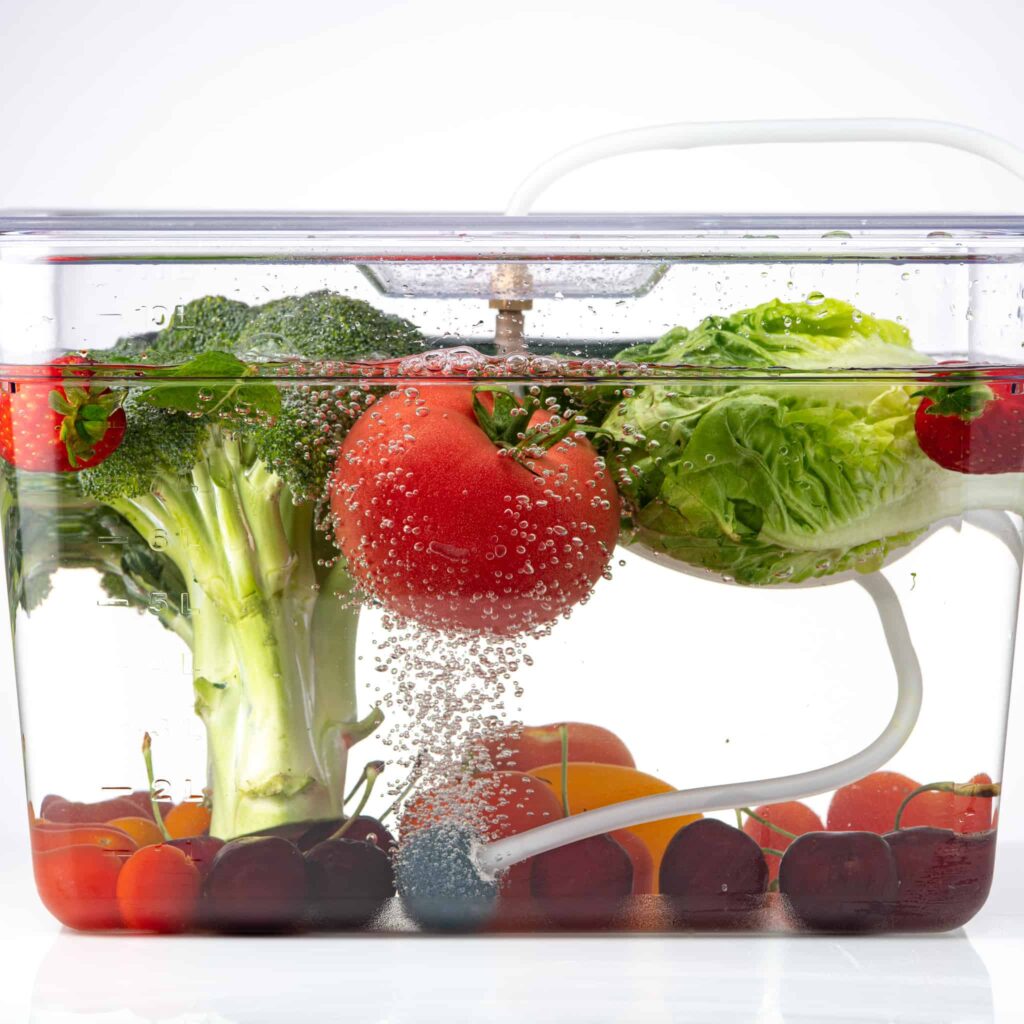
Do you clean your veggies, fruits and meat in ozonated water? No? You should definitely try. Yes? That’s great, we do to, but is the container you use safe?
Ozone is nature’s most powerful sanitiser.
It kills Salmonella, E. coli, Listeria, Norovirus, MRSA, Legionella, EBOLA, MERS, SARS and more and leaves no chemical residue. It removes pesticides and destroys mould and fungal spores, as well as removing smells and odours of organic substances. Ozone treatment is one of the most effective methods of disinfection. Ozone is 50 times more powerful and over 3000 times faster acting than chlorine (which I would never use on food anyway).
This sounds great, but how to use Ozone safely?
Ozone is also highly corrosive and is considered an air pollution hazard. It is dangerous to breath in and it can damage your lungs therefore it is extremely important to start use it when you are well informed and educated.
I’ve been always aware about the damaging side of Ozone and I would use airtight containers placed on my balcony to avoid the Ozone being breathed in but it took me a while to realise that the material of the container used might have a significant impact on the chemical safety. I would originally use Ikea Trofast boxes which seemed ideal as the lids fit perfectly. There is a little hole ideal for the silicon pipe. The large box would fit a week worth of fruits and vegetables, pair of shoes and many other things (ozonated separately). I love this boxes but I would never use them with Ozone again as they are made from Polypropylene plastic (nothing wrong with that when used to store items).
Polypropylene plastic.
Unfortunately Polypropylene plastic is grade C / Fair material which means that ozone will break it down within weeks of use. Prolonged use with any ozone concentration will break it down or corrode beyond usefulness. As you might imagine, when used in wet ozone treatment the broken down particles would float in the water making our precious organic vegetables potentially dangerous to consume.
Steel / Stainless Steel
Steel has got a D / Poor rating. Ozone will break steel down within days or even hours of use. Stainless Steel however performs much better and has got a B rating which means that Ozone has minor effect on it. Prolonged use with high concentrations of ozone will break down or corrode stainless steel beyond usefulness. The only safe to use stainless steel would be 304/316 grade and it has got am excellent A rating, meaning that ozone has no effect on it. They will last indefinitely.
Aluminium
Aluminium would not be the safe option either. We should be aware that it is no safe to be used as pots and pans nor it is good to be used as the ozone treatment container. It has a Fair / C rating meaning that ozone will break it down within weeks of use. Prolonged use with any ozone concentration will break it down or corrode beyond usefulness.
Ozone will also completely damage your nylon clothes and dissolve anything made of natural rubber.
So should you disinfect and deodorise using Ozone? Definitely but make sure the box, container you use is made of Ozone safe material. If you would like to read more about what is safe, please click here.

[…] we know which materials are unsafe to be used with Ozone. Lets list those that are perfectly fine. When buying the container you […]
[…] we know which plastics and metals are unsafe to be used with Ozone, lets list those that are perfectly fine. When buying the container you […]